How to Fix MSCOREE.DLL File Missing on Windows 10/11
Some Windows users are experiencing the ‘mscoree.dll missing‘ error when attempting to install supporting software for a connected peripheral immediately after the installation fails. Most commonly, this problem occurs with printer software and is reported to appear on both Windows 10 and Windows 11.
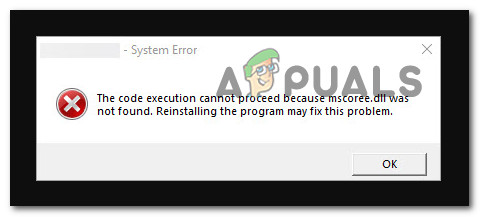
After investigating this issue extensively, we realized that there are actually several different underlying causes that might be directly (or indirectly) causing this mscore.dll issue. Here’s a list of culprits that you should pay attention to:
- Missing Windows Update – One of the most common instances where this error is reported is a scenario in which there’s at least one pending infrastructure update that’s waiting to be installed. In this scenario, start this troubleshooting guide by installing every pending Windows update first.
- Mscore.dll is removed as a result of malware infection – Oftentimes, one reason why you’ll see mscore.dll will suddenly disappear from your computer (and cannot be used during app or driver installations) is after it’s been removed by an AV scan. In this case, you should start by making sure that your PC is no longer infected and follow that up with a manual action to replace the Mscore.dll.
- .NET Framework 3.5 / 4.7 is disabled – Mscore.dll is part of both .NET framework infrastructures. If you get this error every time you attempt to use an app that uses this dependency, the first thing you need to do is check if the .NET framework is disabled. If it is, enable it.
- Corrupted .NET framework – In certain scenarios, you might experience this problem due to some kind of corruption affecting the .NET file library. One way to fix this problem without too much hassle is to utilize the .NET Repair tool and make sure every dependency is healthy.
- Recent System change – As it turns out, this problem can also arise after a recent system change like a new driver installation, an interrupted update, or an AV scan that ended up quarantining system files. If this scenario is applicable, you can fix the issue by using system restore to revert your system back to a state in which this problem was not occurring.
- System File Corruption – Under certain circumsrtances, you’ll experience this error due to some kind of system file corruption affecting certain components trying to call the mscore.dll dependency. If none of the other fixes featured in this article have worked for you, you should be able to fix the problem by running DISM and SFC scans in quick succesion or by performing a repair install.
Install Pending Windows Updates
A scenario in which at least one outstanding infrastructure upgrade is waiting to be deployed is one of the most prevalent scenarios in which this error is reported. In this case, the first step in troubleshooting is to apply all outstanding Windows updates.
A lot of affected users have reported that upon install every pending Windows update, they we’re able to carry on the installation completely without experiencing the same ‘mscoree.dll missing‘ error.
Since Microsoft has made a handful of updates targeted at reducing this sort of problem, this is the potential repair you should start with.
To resolve this issue, go to the Windows Update component and make sure you’re running the most recent build for your Windows 11 or Windows 10 version.
Here’s how to do this:
- To launch the Run dialog box, press Windows + R.
- Then, in the text box, type ‘ms-settings:windowsupdate’ and click Enter to access the Windows Update tab of the Settings app.

Access the Windows Update menu - You could encounter an account control prompt at this point unless you fiddled with the default UAC settings. To provide admin access in this scenario, select Yes.
- After that, go to the right-hand side and select Check for Updates.

Check for Updates - Once the update has been downloaded locally, click Install Now to begin the installation process.
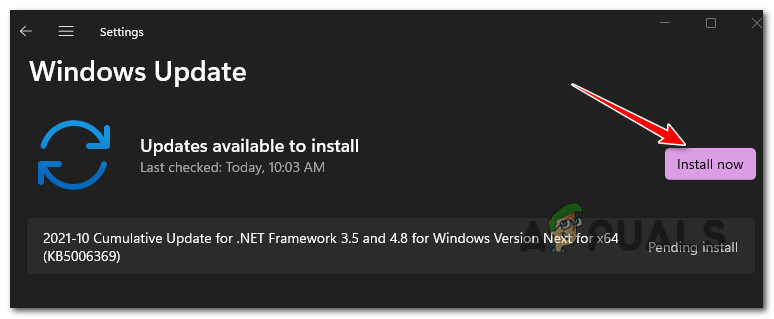
Install pending updates - Finally, reboot your computer to verify whether the problem has been resolved.
If the problem is still not resolved even after you made sure that you installed every pending update available for your Windows installation, move down to the next method below.
Deploy a malware scan
One of the most common reasons why mscore.dll disappears from your computer (and cannot be utilized during program or driver installations) is because it was eliminated by an antivirus check. In this instance, you need first check to see if your PC is still infected, then do a manual step to regenerate the Mscore.dll.
To ensure that this problem is resolved, conduct a thorough scan with a reputable anti-malware application.
When it comes to accomplishing this, there are a number of alternatives, but we recommend doing a thorough Malwarebytes scan because it’s one of the most powerful security scanners that’s equally as successful with malware as it is with adware.
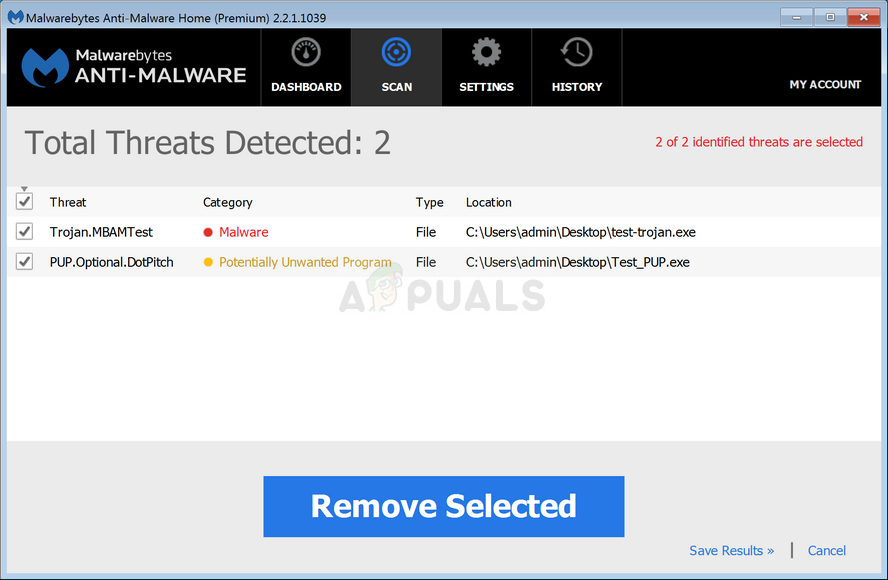
Note: Because certain dangerous applications have been known to masquerade as the mscore.dll in order to evade detection by security suites such as Windows Defender, there’s a chance that Windows Defender (or another 3rd party antivirus) will wind up scanning the file indefinitely due to a false positive.
https://appuals.com/wp-content/uploads/2022/05/deploying-a-malwarebytes-scan.png
https://appuals.com/wp-content/uploads/2022/05/deploying-a-malwarebytes-scan.png
Enable .NET Framework 3.5 / 4.7
Both.NET framework infrastructures include Mscore.dll. If you keep seeing this issue whenever you try to utilize a program that relies on this requirement, the first thing you should do is see if the.NET framework is turned off. If it is, turn it on.
Keep in mind that Windows 10 already has a.NET Framework 3.5 archive and Windows 11 has a.NET Framework 4.7 version pre-installed; all you have to do is ask them to install.
Several impacted users who were previously getting the error ‘mscoree.dll missing’ while trying to install an update or software that relied on the.NET Framework have reported that the installation ran successfully when they used the Windows features screen.
Follow the steps below to install the.NET Framework 3.5 or 4.7 from the Windows Features screen:
- Press the Windows key + R to bring up the Run dialog box. Then, in the text box, type ‘appwiz.cpl’ and click Enter to bring up the Programs and Features menu.

Open the Programs and Features menu - Once within the Programs and Features menu, select Turn Windows features on or off from the right-hand menu.
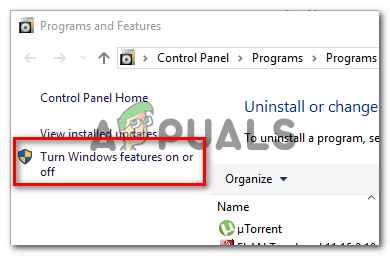
Access the Windows Features menu - Once you’re in the Windows features page, select the box next to .NET Framework 3.5 (this package includes.NET 2.0 and 3.0), then click Ok to preserve your changes.
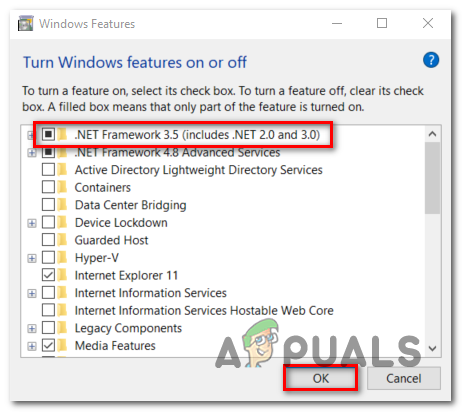
Enable the disabled .NET framework dependencies Note: If you’re on Windows 11, you’ll also need to enable .NET Framework 4.7.
- Click Yes to start the operation at the confirmation box, then wait for the package to be installed successfully.
- Once the procedure is complete, restart your computer and check to see if the problem has been resolved after the next startup.
If the problem is still not fixed, move down to the next potential fix below.
Run the .NET Repair Tool
In rare cases, you may encounter this issue as a result of a corruption in the .NET file library. Using the .NET Repair tool and ensuring that all dependencies are healthy is one method to repair this problem quickly and easily.
If you’re only seeing this issue while installing an update or software that relies on the .NET framework, your existing .NET framework installation is most likely damaged. If this is your circumstance, you should be able to fix the problem by upgrading your .NET Framework.
If this is the case, the problem should be resolved by replacing the corrupted.NET instances with healthy copies. There are a few options for doing this, but the simplest is to utilize the .NET Framework Repair Tool.
The majority of those who were impacted said that after they utilized this confidential Microsoft method to fix the corrupted.NET dependencies, the situation was swiftly cured.
On any modern version of Windows, here’s how to use the .NET Framework Repair Tool:
- Open your browser and go to this official .NET framework download URL.
- Once the page has fully loaded, click the Download option (under Microsoft .NET Framework Repair Tool).

Downloading the .NET repair tool - To begin the procedure, tick the box next to NetFxRepairTool.exe on the following screen. Then, to go on to the next option, hit the Next button.
- Once the download is complete, double-click the installation program and allow admin access by clicking Yes when prompted by the User Account Control popup.
- When you go to the first window of the Microsoft.NET Framework Repair tool, tick the box next to ‘I have read and accepted the licensing conditions.’ Then, to go on to the next option, pick Next from the bottom-left section.

Initiating a repair operation - At this point, the software has already started looking for issues in the .NET dependencies. To avoid causing extra complications, wait patiently for the operation to finish and don’t interrupt it.
- When the process is complete, click Next again to automatically implement the recommended repair options.
- Whether or whether you’re prompted to restart your computer automatically, do it anyway and see if the problem persists when the system restarts.
Attempt to repeat the action that was previously throwing the ‘mscoree.dll missing‘ error and see if the problem is now fixed.
If the same kind of issue is still ongoing, move down to the next method below.
Download & Install mscoree.dll manually (not recommended)
If you have no problems downloading from a third-party directory such as DLL-Files.com, Wikidll.com, or Dlldump.com, the easiest way to solve this problem is to simply download the missing Dynamic Link Library file and paste it where it is needed.
Note: It’s always a good idea to check any file you download (regardless of where you get it from) to make sure it’s not infected with malware.
To make things easier for you, we’ve put up a tutorial that will lead you through downloading and installing the mscoree.dll file in the proper location:
- Go to one of the following folders in your favorite browser:
Dll-Files.com
WikiDll.com
DllDump.com - Once within the DLL directory of your choosing, look for mscoree.dll using the search tool at the top.
- Select the mscoree.dll link from the list of results.

Downloading a healthy mscoree.dll file manually - Click the Download button to download the 32-bit or 64-bit version based on your Windows infrastructure from the list of results.
- Once the file has been successfully downloaded, unpack it and upload it to a directory like VirusTotal to confirm that it is malware-free.
- Examine the findings to see if the scan detected any malware infections.
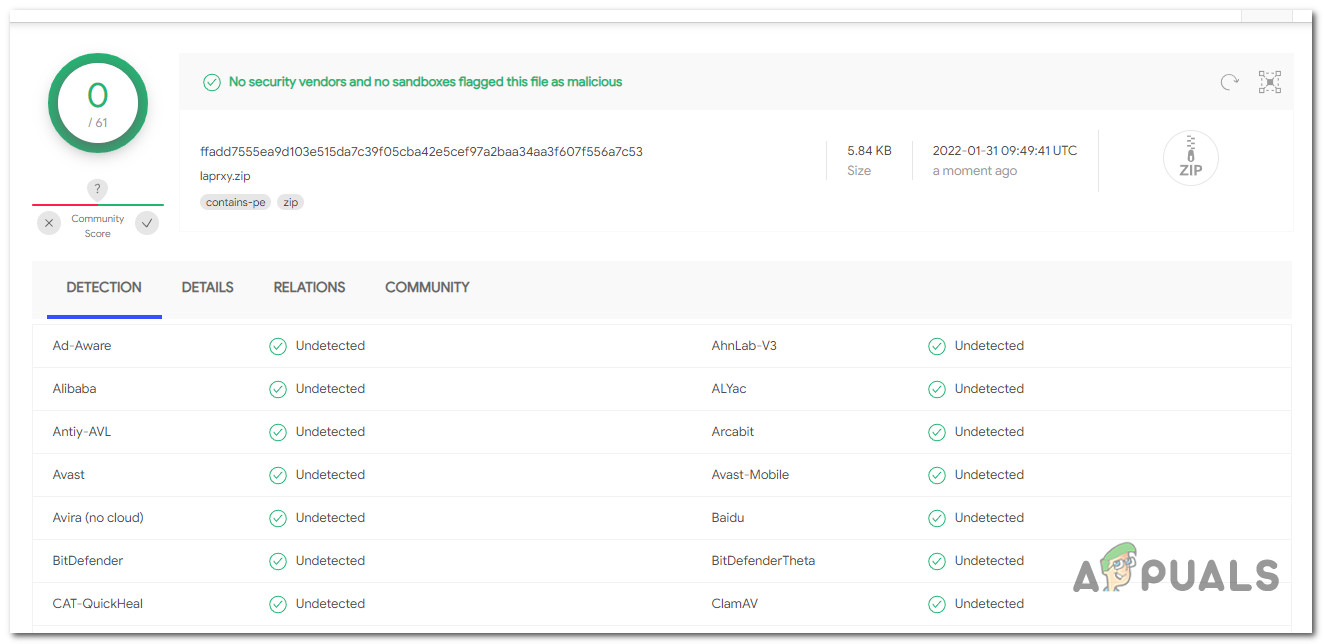
Checking for a virus infection Note: If the scan reveals an underlying virus infection, download another copy of the mscoree.dll file and scan it until you discover one that isn’t a security issue.
- After making sure the file isn’t tainted with malware, open File Explorer and paste mscoree.dll in the following location:
C:\Windows\System32
- When asked to provide admin access, click Continue to grant it, then reboot your PC once the operation is complete.
- Once the mscoree.dll file has been regenerated, reboot your pc and see if you managed to fix the issue.
If the same problem is still occuring, move down to the next method below.
Run DISM and SFC Scan
One of the most common reasons of the ‘mscoree.dll missing’ issue is a system file corruption that impacts the process of calling dependencies involved in the operation of installing drivers and software updates.
If this condition appears to be relevant, do a scan using two built-in tools: System File Checker (SFC) and Deployment Image Servicing and Management (DISM).
While SFC and DISM are similar in some aspects, we recommend running them both in fast succession to improve your chances of restoring damaged system data.
If this is the case, start with a simple SFC scan.
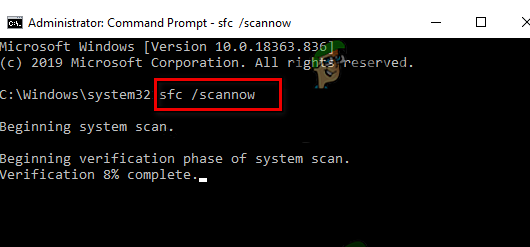
Keep in mind that this tool is entirely local, and you do not need to be connected to the internet at all times to use it.
IMPORTANT: Even though the utility appears to have stalled, it’s crucial not to close the CMD window after initiating this operation. Wait for the operation to complete without disturbing it, as disrupting it might cause logical errors on your HDD or SSD.
Reboot your computer after the SFC scan has been performed successfully, and check to see if the problem has been addressed following the next computer startup.
If the ‘mscoree.dll missing’ problem continues, conduct a DISM scan and complete the procedure according to the on-screen instructions.

Note: DISM downloads healthy replacements to replace faulty system files using a sub-component of Windows Update, but SFC does not. As a result, before starting this step, make sure you have a solid Internet connection.
After the DISM scan has completed successfully, restart your computer to verify whether the’mscoree.dll missing’ problem has been repaired.
If you’re still having trouble installing updates and apps that rely on this requirement, try the next method below.
Using System Restore
This problem might also occur after a recent system change, such as a new driver installation, an interrupted update, or an AV check that resulted in system files being quarantined. If this scenario applies, you can resolve the problem by using system restore to return your system to a previous state where the problem did not exist.
According to several people who have been affected by this issue, you should expect to deal with it after a recent system change (like the installation of an infrastructure update, a driver update, or a cleanup procedure performed by an antivirus).
The majority of the harm may be avoided in this circumstance by using System Restore to restore your system to a healthy state prior to the ‘mscoree.dll missing’ problem.
Keep in mind that doing this method will erase any changes made since the system restore point was created.
Everything will be gone, including any installed programs, changed system preferences, and more.
If you’ve chosen to restore your system, proceed as follows:
- To start the System Restore wizard, open a Run dialog box and type ‘rstrui’ and press Enter.
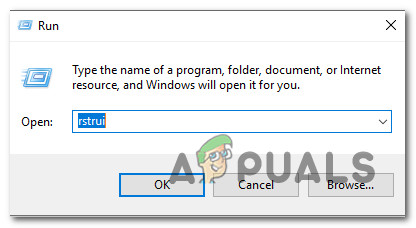
Open the System Restore utility - If the User Account Control prompts you to provide admin access, click Yes.
- On the first screen of the System Restore procedure, click Next to continue.
- Check the box next to Show additional restore points, then select a suitable restoration point before clicking Next.
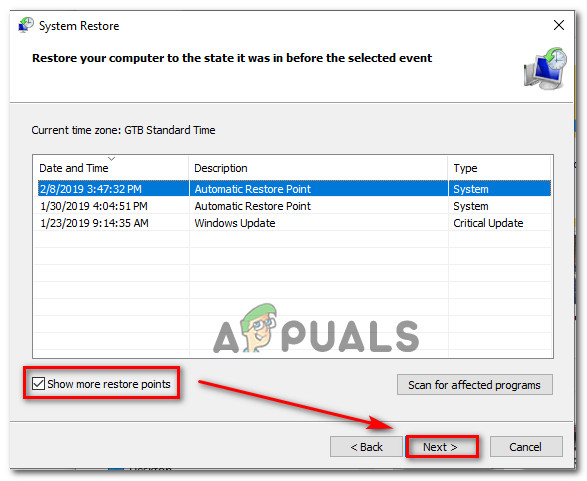
Show more restore points - Next, select a restore point that is dated before the date in which you started dealing with the ‘mscoree.dll missing’ error and click next to start the restoring process.
- After the procedure is finished, repeat the action that was causing the error and see if the issue is now resolved.
If the same kind of issue is still occuring, move down to the next method below.
Perform a repair install
If none of the alternatives given above have helped you resolve the’mscoree.dll missing’ error while installing updates or apps, you can presume that your issue is caused by an unfixable system corruption problem (with DISM and SFC scans).
Several clients who had a similar problem said they were able to remedy the problem after updating all Windows components. This may be accomplished with either an in-place fix (repair install) or a clean install.
A clean install is a simpler choice, but it has the drawback of preventing you from maintaining your personal data (apps, games, personal media, and so on) unless you back them up first.
The procedure takes a bit longer if you pick a repair install, but the main benefit is that you get to keep all of your personal stuff, including applications, games, personal media, and even certain user settings.





